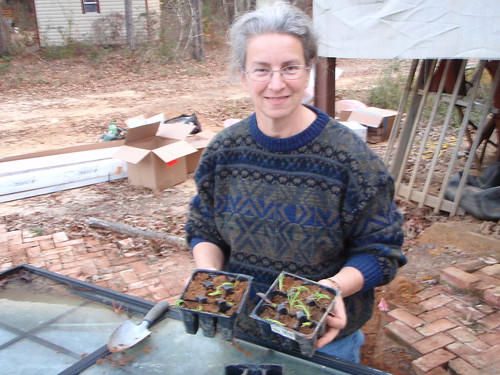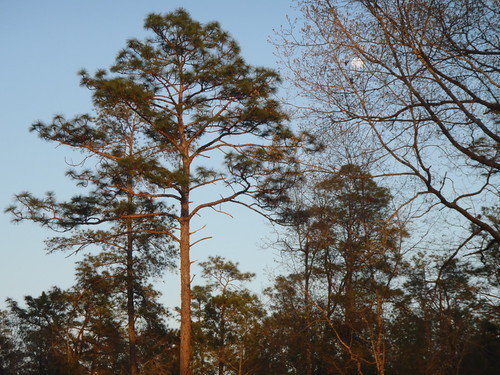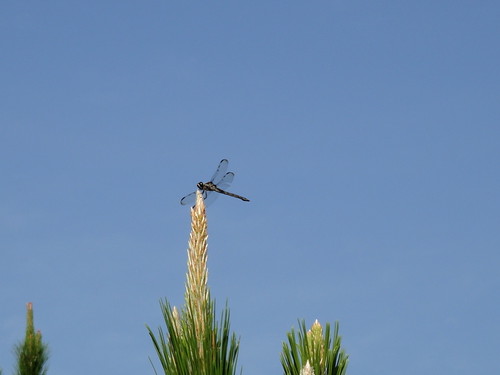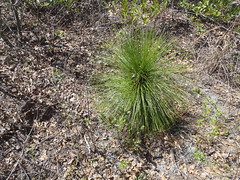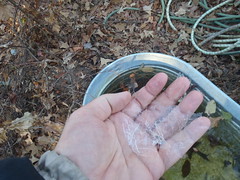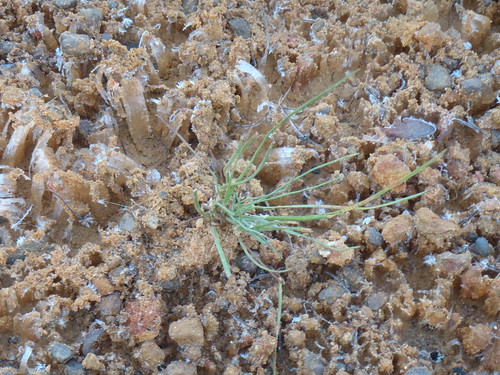We planted these longleaf three years ago, in 31 January 2009: 12,000 trees we dibbled in by hand.
Not even three years old and some of them are 12 feet tall!
Every few years they need burning to reduce the weeds like dog fennel and to encourage the native warm season grasses (NWSG). The NWSG burn well: low to the ground, moving right along. The dog fennel not so much, but they do sometimes flare up and make a good show, like this:

Burning planted longleaf, Okra Paradise Farms, Lowndes County, Georgia.
Pictures by Gretchen Quarterman, 16 December 2011.
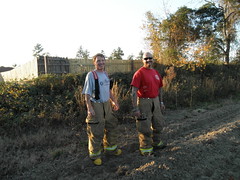 The longleaf themselves are the most fire-resistant of trees.
Almost all of these longleaf will survive the fire and thrive.
The volunteer loblolly and slash, not so much, and any oaks or other trees even less,
so fire favors the longleaf.
We had perfect burning conditions: 5-8 MPH wind from the northwest, blowing towards
the road.
The longleaf themselves are the most fire-resistant of trees.
Almost all of these longleaf will survive the fire and thrive.
The volunteer loblolly and slash, not so much, and any oaks or other trees even less,
so fire favors the longleaf.
We had perfect burning conditions: 5-8 MPH wind from the northwest, blowing towards
the road.
 Some of the subdivision neighbors who are not familiar with prescribed burns
called the county fire department.
They came out, took one look at the firebreak, and filed a report saying all was OK.
Some of the subdivision neighbors who are not familiar with prescribed burns
called the county fire department.
They came out, took one look at the firebreak, and filed a report saying all was OK.
 Here’s how the fire got started. Some pyromaniac dribbling fire….
Here’s how the fire got started. Some pyromaniac dribbling fire….
Here’s
a slideshow
and
a playlist of some videos.
Continue reading →
 Back in December
Back in December
 we burned some planted longleaf.
Six weeks later, they’re greening up and candling.
I couldn’t find a single longleaf that didn’t survive.
Even ones that a few weeks ago you would have thought
were burnt sticks now have green leaves or white candles
or both.
we burned some planted longleaf.
Six weeks later, they’re greening up and candling.
I couldn’t find a single longleaf that didn’t survive.
Even ones that a few weeks ago you would have thought
were burnt sticks now have green leaves or white candles
or both.
